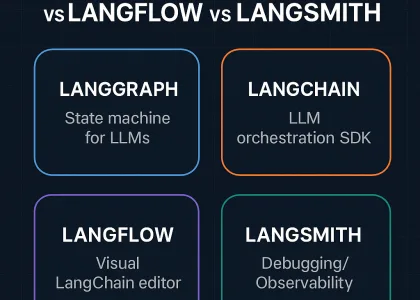🔐 How to Secure Your AI Setup as a Modern Vibe Coder (React/Next.js Edition)
The rise of AI APIs like OpenAI, Claude, DeepSeek, and Mistral has unlocked new creative potential. But if you’re a modern AI/Vibe coder building apps in React or Next.js, going from idea to production can be risky without solid security practices.
In this guide, we’ll walk you through the most common security vulnerabilities when working with AI, and how to harden your setup to protect your keys, your users, and your app.
⚠️ Common Security Issues in AI-Powered Frontend Apps
🚫 1. API Key Exposure
Many devs accidentally expose sensitive API keys by embedding them in frontend code. These keys are easily extracted from the JS bundle by attackers.
✅ Fix:
- Never store AI keys in the frontend.
- Create a secure API proxy in
pages/api/(Next.js). - Use
.envvariables only on the server.
💣 2. Prompt Injection Attacks
Users may trick your AI into doing or saying things it shouldn’t, like overriding safety instructions or exposing internal logic.
✅ Fix:
- Sanitize user inputs.
- Use fixed system prompts the user can’t modify.
- Filter AI outputs to prevent unwanted results.
💻 3. Cross-Site Scripting (XSS)
Rendering AI-generated or user-submitted content directly can allow malicious JavaScript execution.
✅ Fix:
- Sanitize HTML using libraries like
DOMPurify. - Avoid
dangerouslySetInnerHTMLunless absolutely required. - Escape dynamic content before rendering.
🌍 4. Server-Side Request Forgery (SSRF)
If your AI or server fetches URLs, attackers might point it to internal resources.
✅ Fix:
- Whitelist safe domains.
- Block IPs like
169.254.169.254used in cloud metadata. - Use server-side request validation.
🚨 5. Lack of Rate Limiting
Public AI endpoints can be spammed, driving up costs or crashing your app.
✅ Fix:
- Add rate limiting with Redis or in-memory tools.
- Tie limits to user sessions or IP addresses.
- Monitor usage via logs and alerts.
🕵️ 6. Data Leakage & GDPR Violations
AI prompts can unintentionally leak user data or store personal information in logs.
✅ Fix:
- Anonymize data before sending it to AI models.
- Avoid logging raw prompts/responses.
- Ensure all providers are GDPR-compliant.
🔐 7. Misconfigured CORS or Public API Routes
Allowing * in CORS or skipping auth checks opens up your backend.
✅ Fix:
- Restrict CORS to trusted domains.
- Require tokens or sessions for sensitive routes.
- Protect all
/api/endpoints.
✅ Best Practices for Secure AI DevOps
| Area | Action |
|---|---|
| 🔑 Secrets | Store API keys only in server env vars |
| 🔁 Auth | Use next-auth or token/session strategies |
| 📦 Packages | Run npm audit or yarn audit weekly |
| 📉 Rate Limiting | Protect AI routes using Redis + middleware |
| 🧹 AI Output | Post-process AI output to remove malicious code |
| 📜 Logging | Keep audit logs, avoid sensitive data logging |
| 🔍 Monitoring | Use tools like Sentry, LogRocket, or Prometheus |
| 📥 Validation | Validate and sanitize all incoming data |
🛡️ Tools to Help You Stay Safe
DOMPurify– for HTML sanitizationexpress-rate-limit+ Redis – API protectionhelmet– secure HTTP headersnext-auth– secure authentication- Custom AI Proxies (FastAPI, Node.js) – for keeping AI logic server-side
📦 BONUS: Secure Deployment Checklist
Before going live:
- ✅ Keys stored in
.env, not in public files - ✅ Rate limiting tested
- ✅ User input validation enforced
- ✅ Output sanitized before rendering
- ✅ Logging and monitoring enabled
- ✅ GDPR/Privacy policy in place
🧠 Final Thoughts: Build AI with Confidence
Modern AI development is thrilling—but powerful APIs demand responsible engineering. As a Vibe Coder, securing your React/Next.js stack ensures you ship faster, safer, and with trust.





